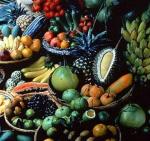A Roadside Cleanup Event with Blue Moon
 On Wednesday, October 8th, Bucks County got a little cleaner. In concert with Heritage Conservancy, Blue Moon Acres held a roadside cleanup event on Upper Mountain Road between Durham and Quarry Roads. It’s a gorgeous stretch of road—wooded, cloistered, populated with deer, raptors, and wild turkeys. It’s also a favorite dumping ground for litterers.
On Wednesday, October 8th, Bucks County got a little cleaner. In concert with Heritage Conservancy, Blue Moon Acres held a roadside cleanup event on Upper Mountain Road between Durham and Quarry Roads. It’s a gorgeous stretch of road—wooded, cloistered, populated with deer, raptors, and wild turkeys. It’s also a favorite dumping ground for litterers.
Litter is a massive problem, both environmentally and economically. Each year, 1.9 billion tons of litter wind up in the ocean, harming marine life and damaging riparian communities along the way. Each year too, $11.5 billion is spent to clean up that litter, money which could be better spent on health care and housing. Cigarette butts, which are made of cellulose and take more than 10 years to disintegrate, comprise around 50% of roadside trash. But the most commonly-found object during clean-up events such as ours is fast food wrappers.
But litter creates more than economic and environmental problems; it creates aesthetic problems too. Litter just looks bad. It’s demoralizing. It forces us to confront the fact that there are those in our society who would rather sabotage the landscape than exert the small effort to properly dispose their waste. It turns even the most beautiful roadside into a landfill.
Organizing a roadside clean-up, however, is a way of combating this demoralization. In addition to benefitting the environment, and the biology dependent on that environment, it provides a sense of empowerment, a way of overcoming the helplessness that a littered landscape elicits. And if conducted with coworkers, it provides an extraordinary sense of camaraderie. Cleaning up that stretch of road was fun. It gave us an opportunity to bond over a meaningful and important action, and helped us remember that we’re friends as well as coworkers.
It’s easy to take the view that roadside cleanup events are little more than symbolic, that the problem is too huge to solve with volunteer efforts alone. But such a view misses the point. We clean roadsides not because we think we are going to save the world, or even because we think those roadsides will remain litter-free, but because it is the right thing to do. And doing the right thing, reflexively, without consideration for what’s practical or achievable, is precisely what’s needed in this age of deeply-rooted, unconscious cynicism.









